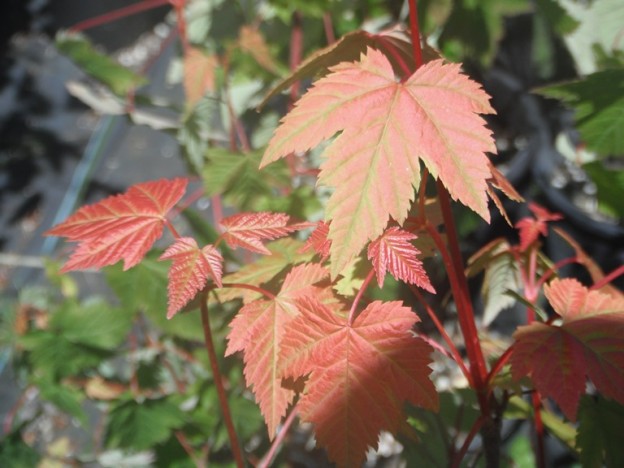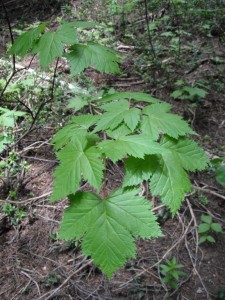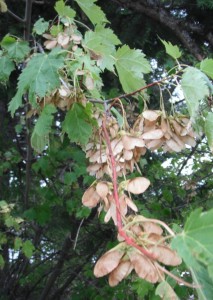Acer glabrum var. douglasii (Hook.)Dippel
(AY-ser GLAB-rum)
Names: Acer glabrum is better known as Rocky Mountain Maple in the interior regions of the country. Glabrum means smooth, without hair, referring to its smooth stems and leaves. The variety is named after David Douglas,
Relationships: There are nearly 150 species of maples worldwide. Most are from eastern Asia. North America is home to about a dozen. Maples are popular ornamental trees and there are many cultivated varieties. We have three native maple species in the Pacific Northwest: Big-Leaf Maple and two more shrubby cousins, Vine Maple, Acer circinatum, and Douglas Maple, Acer glabrum.
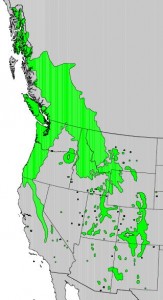
Distribution of Rocky Mountain Maple from USGS ( “Atlas of United States Trees” by Elbert L. Little, Jr. )
Distribution: The variety douglasii, is found from coastal southeast Alaska and British Columbia, to southern Oregon; east to Idaho and Montana.
Growth: It is a small tree or shrub to 30 ft. (10m), usually multi-stemmed.
Habitat: Douglas Maple will withstand drier, more open sites than Vine Maple and will also withstand colder temperatures. Wetland designation: FAC, Facultative, it is equally likely to occur in wetlands or non-wetlands.
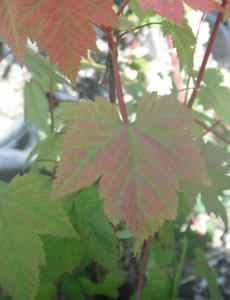 Diagnostic Characters: The toothed leaves of Douglas Maple are 3-5 lobed, 1-3 in. (2-8cm) wide. Young twigs are usually reddish, in contrast to Vine Maple’s green stems. The flowers are greenish-yellow. The samaras are about 1 in (2-3cm) long in a V-shape.
Diagnostic Characters: The toothed leaves of Douglas Maple are 3-5 lobed, 1-3 in. (2-8cm) wide. Young twigs are usually reddish, in contrast to Vine Maple’s green stems. The flowers are greenish-yellow. The samaras are about 1 in (2-3cm) long in a V-shape.
In the landscape: Douglas Maple can be used in the same way as Vine Maple. Fall foliage ranges from yellow to orange to crimson.
Propagation: Seeds do not store well. They are best sown as soon as they are ripe outside or in a cold frame. Germination occurs in late winter or spring. The seeds may also be scarified or soaked for 24 hours, then cold stratified at 40ºF (4ºC) for 2-6 months. Seeds and seedlings need to be protected from rodents, slugs and other herbivores. Lower branches may be layered to generate rooted cuttings
Use by natives: Natives used Douglas Maple for snowshoe frames.
Use by wildlife: It is an important browse species for deer, elk and other big game animals. Grosbeaks and small mammals eat the seeds.
Links:
Consortium of Pacific Northwest Herbaria
WTU Herbarium Image Collection, Plants of Washington, Burke Museum
E-Flora BC, Electronic Atlas of the Flora of British Columbia
Jepson Eflora, University of California
Ladybird Johnson Wildflower Center
USDA Forest Service-Fire Effects Information System
Native Plants Network, Propagation Protocol Database
Native American Ethnobotany, University of Michigan, Dearborn

